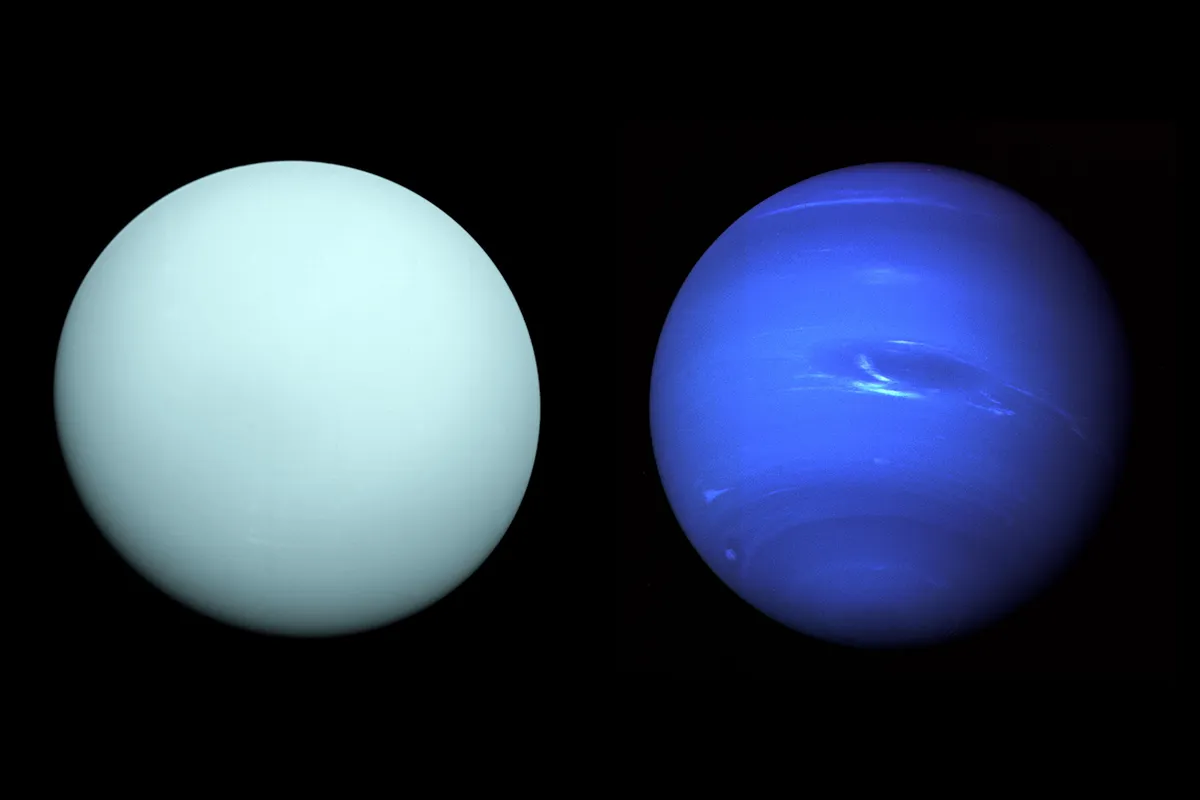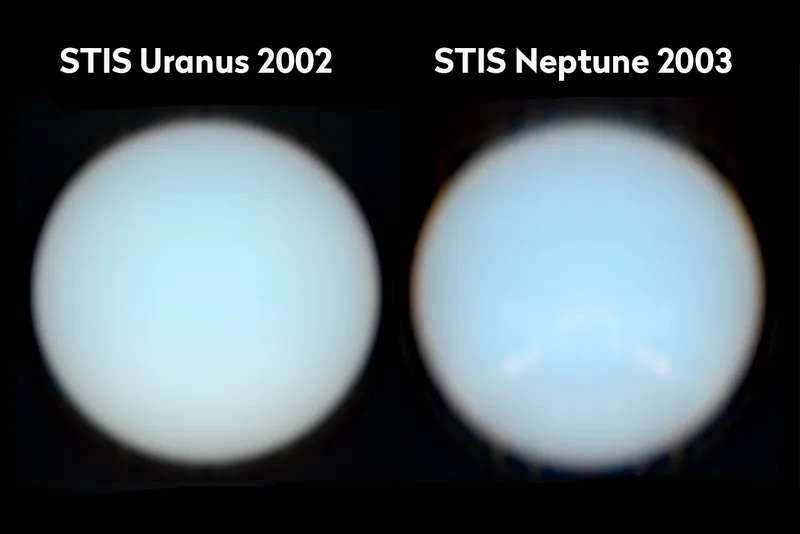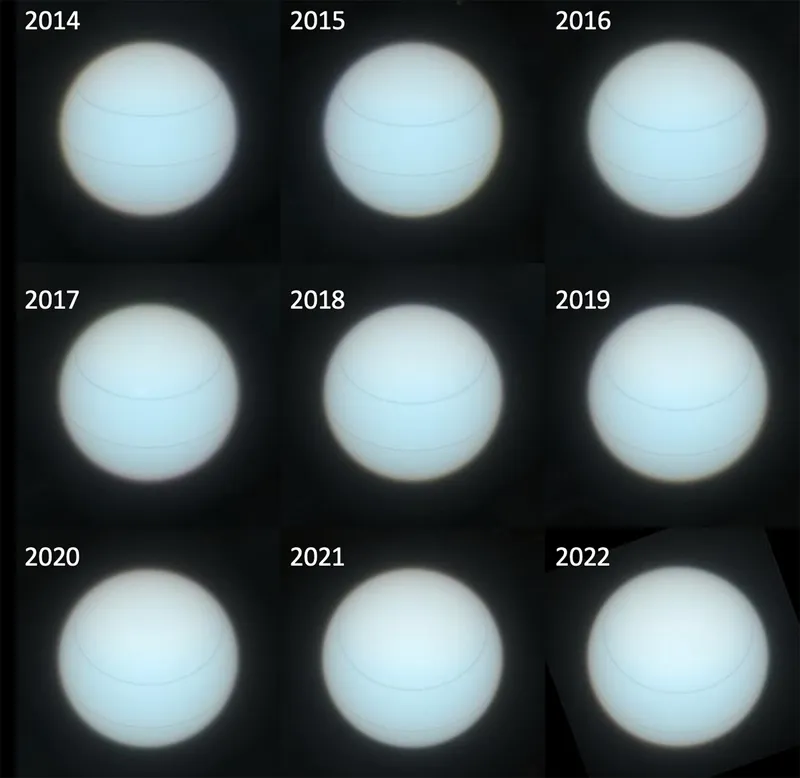Astronomers have produced new images of Uranus and Neptune to reveal what the ice giant planets really look like, and the results show their colours are more similar than popularly thought.
Uranus and Neptune are known for being different colours. Neptune is depicted as being a deep, rich blue, while Uranus is shown as more of a green hue.
But new research by UK astronomers shows the two planets are actually closer in colour than images would suggest.
The research was led by Professor Patrick Irwin from the University of Oxford and was published on 5 January 2024 in the Monthly Notices of the Royal Astronomical Society.

Prof Irwin and his team explain how astronomers have known for some time that contemporary images of Uranus and Neptune do not actually reflect their true colours.
Both planets, the study says, are actually a similar shade of greenish blue.
The misconception came about because of images captured of Uranus and Neptune in the 20th century - including by the Voyager 2 spacecraft that conducted flybys of the planets - recorded images in separate colours.
These single-colour images were then combined to create composite images but, say the team behind this study, those images were not always processed to achieve a 'true' colour image.
In the case of Neptune, the image was made too blue, and Voyager 2 images were also strongly contrast-enhanced to emphasises atmospheric phenomena.

“Although the familiar Voyager 2 images of Uranus were published in a form closer to ‘true’ colour, those of Neptune were, in fact, stretched and enhanced, and therefore made artificially too blue," says Professor Irwin.
“Even though the artificially-saturated colour was known at the time amongst planetary scientists – and the images were released with captions explaining it – that distinction had become lost over time.
“Applying our model to the original data, we have been able to reconstitute the most accurate representation yet of the colour of both Neptune and Uranus.”
Achieving Uranus and Neptune's true colours

The team used data from Hubble Space Telescope’s Space Telescope Imaging Spectrograph (STIS) and the Multi Unit Spectroscopic Explorer (MUSE) on the European Southern Observatory’s Very Large Telescope.
In both instruments, each pixel is a continuous spectrum of colours, so observations by the telescopes can be processed to represent the true colour of the ice giant planets.
The team used this data to re-process Voyager 2 and Hubble Space Telescope’s Wide Field Camera 3 (WFC3) images of Uranus and Neptune, revealing the two planets to both be a similar shade of green-blue.
Neptune does have a slight hint of additional blue, which the model shows to be a result of its thinner haze layer.
Uranus's changing colours explained
As well as determining a better representation of the true colours of Uranus and Neptune, the study has also provided a solution as to why Uranus's colour changes during its orbit of the Sun.
Uranus takes 84 years to orbit the Sun, and measurements of its brightness were recorded by the Lowell Observatory in Arizona, USA from 1950 – 2016 at blue and green wavelengths.
These showed Uranus is a little greener at its solstices, when one of the poles is pointed towards the Sun. But during equinoxes, when the Sun is over the equator, Uranus appears bluer.
Part of the reason for this was known to be a result of Uranus spinning virtually on its side during its orbit, relative to the rest of the planets.
This means during Uranus's solstices, either its north or south pole points almost directly towards the Sun and Earth.
The study authors say this is significant because any changes to the reflectivity of the polar regions would imact Uranus’s overall brightness when viewed from Earth.
But exactly why does this reflectivity differ, and to what extent?

The researchers developed a model comparing the spectra of Uranus’s polar regions to its equatorial regions, which found the polar regions are more reflective at green and red wavelengths than at blue wavelengths.
This is partly because methane, which is red-absorbing, is about half as abundant near the poles than the equator.
However, further investigation revealed Uranus's changing colour is also down to a layer of gradually thickening icy haze - likely methane haze - observed over Uranus's summer sunlit pole as the planet moves from equinox to solstice.
Key takeaways
“This is the first study to match a quantitative model to imaging data to explain why the colour of Uranus changes during its orbit," says Prof Irwin.
“We have demonstrated Uranus is greener at the solstice due to the polar regions having reduced methane abundance, but also an increased thickness of brightly scattering methane ice particles.”
Dr Heidi Hammel, of the Association of Universities for Research in Astronomy (AURA), who is an expert on Uranus and Neptune but who was not involved in the study, says “The misperception of Neptune’s colour, as well as the unusual colour changes of Uranus, have bedevilled us for decades.
“This comprehensive study should finally put both issues to rest.”
The study “Modelling the seasonal cycle of Uranus’s colour and magnitude, and comparison with Neptune”, by Patrick G.J. Irwin et al., was published in Monthly Notices of the Royal Astronomical Society on 5 January 2024.
